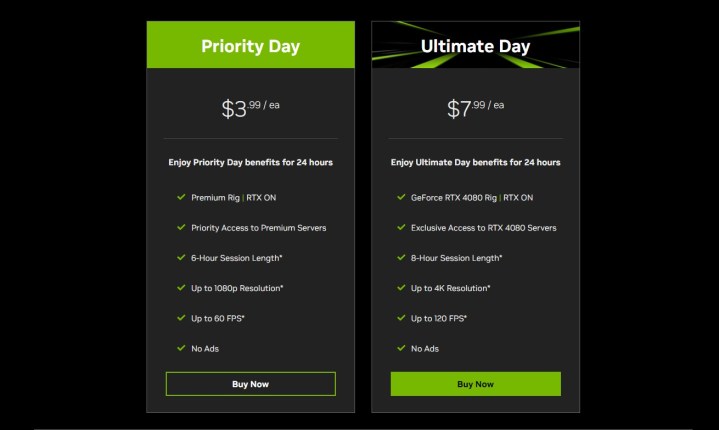Nvidia has introduced Cloud G-Sync, a new feature that brings adaptive refresh rates to GeForce Now, their cloud gaming service. This technology initially supports PCs with Nvidia GPUs and Macs, including those with Apple Silicon and older models with Intel CPUs and AMD GPUs. However, Intel and AMD GPUs are not currently supported on Windows PCs. In addition, Nvidia has made it easier to try out GeForce Now by introducing day passes.
Cloud G-Sync’s variable refresh rate feature synchronizes your monitor’s refresh rate with your gaming frame rates on GeForce Now. Along with reducing latency, this technology enhances the gaming experience by reducing screen tearing and stuttering. Nvidia uses Reflex and its proprietary RTX 4080 SuperPODs to implement Cloud G-Sync.
To use Cloud G-Sync, you will need a GeForce GTX 16 series or RTX 20 series (or later) graphics card. Mac users with Apple silicon and some older Intel-based models can also utilize this feature. A compatible gaming monitor that supports VRR and G-Sync, AMD FreeSync, or Apple ProMotion is required, and Cloud G-Sync only supports single display setups.
For an enhanced gaming experience with GeForce Now, users can opt for the Ultimate membership tier, which now includes day passes. The day passes offer different durations and resolutions for gaming sessions, providing a flexible and cost-effective way to enjoy high frame rates on AAA titles.

In conclusion, the addition of VRR and Reflex to GeForce Now enhances the gaming experience, while Nvidia’s introduction of day passes makes it more accessible to users looking to test the platform without committing to a subscription. This move benefits both new players exploring the service and occasional users who can now enjoy on-demand gaming sessions with GeForce Now.
Editors’ Recommendations


